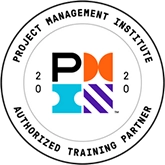Giving High-Impact Feedback
- Virtual Instructor-led: 3-hour session
The foundation of all effective feedback is this: the intent to improve performance. Without this intention behind it, feedback can fall flat, becoming a missed opportunity for both growth and connection. Transformative change cannot happen without feedback, so it is important to create the conditions where the receiver can take it in, reflect on it, and learn from it.
In this highly interactive session we will explore the connection between effective feedback and employee engagement and performance. We will learn what constitutes a high-impact conversation, delivering feedback in a way that increases someone’s motivation and resources for change. Investigating several models and techniques for giving feedback, the session will culminate in small group role-play scenarios. Each person will have the opportunity to rotate through the roles of feedback giver, receiver, and observer.
Target Audience
This course is designed for new and experienced managers, leaders, team leads, and team members who want to build their confidence and competence in feedback situations.
Learning Objectives
- Describe the key components of high-impact feedback.
- Articulate the connection between effective feedback and employee engagement.
- Analyze a mini case study exploring the interpersonal dynamics of feedback.
- Apply a brain-science based framework to the feedback process.
- Leverage a proven model to prepare and deliver feedback in a real-life scenario.
Course Outline
Exploring the Feedback Process
- Opening Activity: Animal Kingdom
- What Feedback IS... and What It Isn’t
- Group Activity: Giving and Receiving Feedback
The Connection Between Feedback and Engagement
- Global Statistics: Employee Engagement Levels
- Poll: What Kind of Feedback Creates Active Disengagement?
- What High-Impact Conversations Involve
- Activity: Mini Case Study
- Activity: Feedback that Motivates
A Neuroscience Perspective on Feedback
- The SCARF® Model
- Five Elements of SCARF
- Activity: Applying the SCARF Model to Feedback
- The Magic Box
Engaged Feedback Using the STAR Model
- Video: The Secret to Giving Great Feedback
- The STAR Model of Feedback
- Ask-Tell-Ask Technique
- Productive Versus Unproductive Mindset
Role-Play and Skill Practice
- Individual Activity: Choose a Feedback Scenario
- Role-Play in Groups of Three
Summary and Next Steps
MDV2010-5 Course Code
For more information on this topic, as well as how Corporate Education Group can help power your organization’s performance, contact us via email or call 1.800.288.7246 (US only) or +1.978.649.8200. You can also use our Information Request Form!




